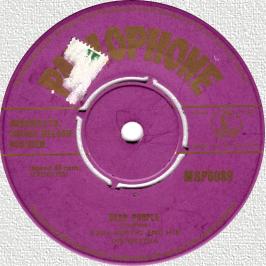
|
1954 | |
| Guy Mitchell, born Albert Cernick, 22nd February 1927 in Detroit, Michigan. | ||
|
Guy Mitchell's upbeat country style suited the mood of the time and became extremely popular with British record buyers. In retrospect, Guy Mitchell bridged the gap between the old style crooner and 'rock and roll'. Guy's popularity in the UK began in 1950 carried along on the optimism following the austerity of the war years. By 1960 the country's record buying habits had changed and he never returned to the UK chart. However the early hits were given a renaissance during the 1990s after Guy's appearance in the UK TV series 'Your Cheatin' Heart'. |
||
| EMI (who were still putting "Columbia Graphophone Company Ltd." on their record sleeves at that time) started manufacturing vinyl 45rpm records at the end of 1952- but sales of these were mostly EPs until 1956. The 78 did not lose its position of dominance until 1958, but by 1960 EMI had ceased making 78s in the UK. It soon became normal for EPs to be packaged in 'picture sleeves' but that is not the case on this early example. The 'company' sleeve shown here (this is the back of it) actually contains a panel which extolls the virtues of the new format. Some early 45-rpm sleeves had notes printed on them that claimed the 45 to be 'non-breakable', but this assertion appears to have been soon dropped- presumably because it was literally stretching things too far. | ||


